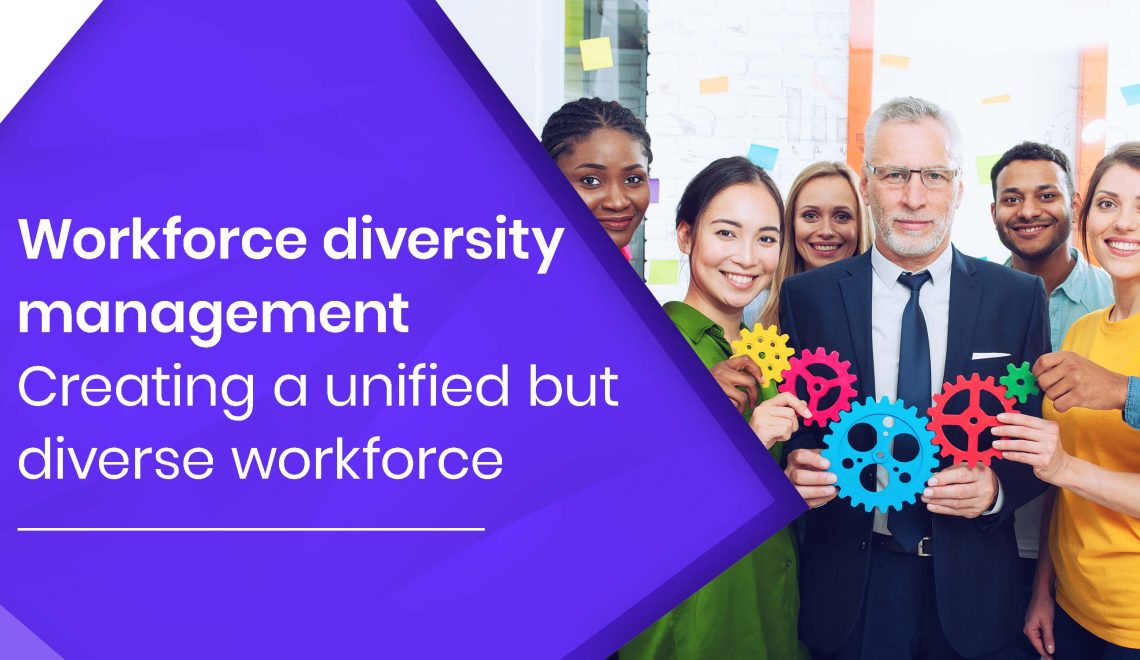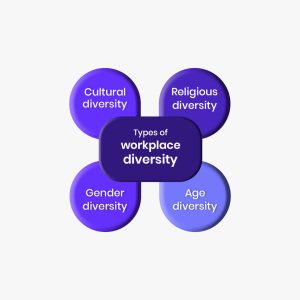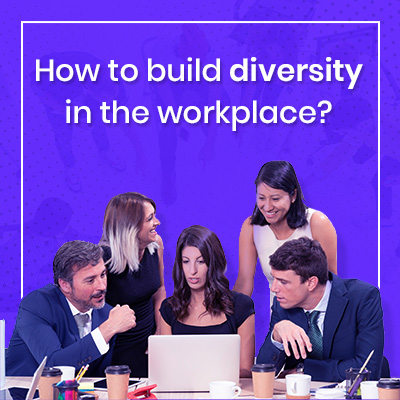
Workplace diversity is good for your company’s health. The organizations are accepting this and taking a proactive stance toward workforce diversity management and inclusion. So, let’s join the bandwagon and take advantage of a varied workforce.
Diverse employees can bring fun, innovation, and creativity into the workplace. But be warned, it might also bring trouble if not handled properly.
Respecting and accepting differences is vital in today’s world with increased human mobility. You might find an Indian, a Japanese, and a Chinese working in unison towards the successful completion of a US project. It is encouraging to see people forgetting their differences and joining hands for higher goals. The idea might be beautiful, still not an easy one to implement.
No two individuals are alike, and creating a culture of unity from a diverse workforce with its associated challenges is growing in importance. The importance of workplace diversity is widely accepted, but promoting a culture of non-discrimination and diversity is easier said than done.
What is workplace diversity?
How do you define workplace diversity? Workplace diversity refers to a heterogeneous workforce comprising individuals from diverse backgrounds. The major factors affecting workplace diversity are age, religion, language culture, race, education, and skills. Different viewpoints, different perspectives, and different approaches to problems; this is what a diverse workforce brings to the organization.
A mobile workforce that is ready for cross-border migration has put workplace diversity at the centre stage and introducing diversity into the workplace is becoming a strategic HR policy in many organizations for the countless benefits it holds.
Types of workplace diversity

The different types of diversity in the workplace are cultural diversity, religious diversity, age diversity, gender diversity, etc. All these factors play a major role in deciding the workplace culture.
Workplace diversity benefits
Why is diversity important in the workplace? Companies that eliminate bias in hiring and welcome workplace diversity are viewed as desirable employers. Let’s see a few advantages of workforce diversity.
Higher levels of creativity
A top reason for fostering workplace diversity is the improved levels of creativity. When the workforce includes people from diverse backgrounds, it brings in different perspectives and viewpoints into the organization. It can stretch the thinking and lead to out-of-box solutions to problems.
Improves productivity
Creativity obviously improves productivity. New ideas and different approaches to problems can help the organization handle customer pain points effectively. Innovation leads to unique products that can resolve customer issues effectively. Diversity also boosts employee morale and promotes better knowledge sharing. All these contribute to increasing productivity within the organization.
Makes the organization multilingual
Often the mix of people from varied linguistic backgrounds has been seen as a communication barrier within the organization. But the truth is that, when employees on board speak different languages, it can open doors for new business opportunities across the globe. Communicating with clients and customers from diverse language backgrounds is simplified.
Reduces employee attrition
Companies with a diverse workforce usually have inclusive policies and are viewed as desirable employers. The mix of different sets of people promotes creativity and cross-cultural learning. Many a time, employees prefer to work in companies that are diversity-friendly due to the lack of discrimination based on language, gender, or race.
Wider talent pool
When the organization is open to employees from diverse backgrounds, it widens its chances of roping in exceptional talents from all over. The employees would be more willing to join companies that favour workplace diversity. This can give access to the global talent pool and introduce unique skill sets and creativity to the organization.
How to build diversity in the workplace?

Workplace diversity doesn’t happen by itself. Conscious and deliberate efforts are required from the HR department to instil a culture of inclusion within the organization by incorporating workforce diversity in HRM.
Evaluate the current diversity
Where does the organization stand currently in terms of diversity? Take a stock of the existing workplace diversity and compare it with the industry averages. This can help to understand where you stand and what progress has to be made.
Start with hiring
Actively recruiting a diverse work pool is the first step to diversity. There are many ways to attract talent from a wider base including posting on diverse job boards, seeking diverse referrals, and mentioning the diversity policy on the company’s website.
Awareness among the managers
A training program for the managers would be ideal to educate them on the company’s inclusion policies. Since the employees’ first line of interaction is always the managers, it is important that they are made aware of the existing workforce diversity and the techniques to handle it. The zero-tolerance approach to discrimination must be clearly communicated to the managers.
Implement diversity-friendly measures
The organizational policies should be reassessed and aligned with the goal of workplace diversity. Strict measures against workplace harassment, accommodating an environment for religious needs or physical disabilities, flexible work schedules, leave options, and so on can help in this.
Form a diversity council
Establishing a team of senior members to mentor and nurture diversity and monitor the workplace for diversity issues is recommended. The council can hold regular diversity training to educate the employees on the company’s diversity policies.
Evaluate progress
Measure the progress of your diversity measures against the defined goals. Examine the areas where you could possibly improve.
How to handle diversity issues?
For a diverse workforce to perform at its best barriers to inclusion must be overcome.
- Employee interaction – Encourage employees from diverse backgrounds to interact and get to know each other. Provide team lunch or other activities that can serve as icebreakers and foster team spirit.
- Establish clear guidelines – Have well-defined policies that specify the company’s diversity and inclusion approach. The anti-harassment approach and policies on non-discrimination should be clearly spelled.
- Promote a culture of respect and recognition – People are different in their personalities, language, culture, and physical appearance. Inclusion requires that these differences be accepted, recognized, and respected within the organization. Individuality should be given due recognition.
- Disciplinary action– Any discrimination, prejudice, or harassment should be promptly dealt with. Employees should have a clear idea of what is expected of them in the realm of inclusion. There should be an efficient channel for people to report harassment without fear.
Final thoughts
The benefits of workplace diversity are numerous and the human resource department in organizations must take concrete steps toward this at the earliest. A diverse workforce can improve the profits and also the overall image of your company.
What are the 4 stages of the HR approach to diversity management?
The 4 stages of the HR approach to diversity management are undeveloped, beginning, followed by intermediate, and vanguard.
What are the two major forms of workforce diversity?
Individual differences and ethnicity are the two major forms of workforce diversity.
What are the three key components of diversity management?
The three components are respect for employees, valuing their strengths, and collaborative leadership.
What are the 7 biggest diversity issues in the workplace?
The 7 biggest diversity issues are respect, accommodation, ethnic differences, gender equality, disabilities, generation gap, and communication.
What are the 5 key areas of diversity?
The 5 key areas of diversity are cultural diversity, gender diversity, racial diversity, diversity in interests, and physical disabilities.



